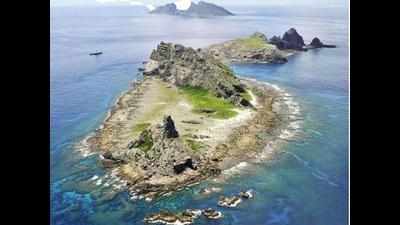- News
- City News
- guwahati News
- Majuli has both natural and cultural value, say experts
Trending
This story is from July 20, 2016
Majuli has both natural and cultural value, say experts
In the first preliminary nomination dossier prepared by the Majuli Island Protection and Development Council (MIPDC), an NGO, only the island's 'cultural' values were listed.This dossier was sent to Unesco in 1998.

(Representative image)
Guwahati: With Sikkim's Khangchendzonga National Park entering the Unesco World Heritage Site list as the first 'mixed site' (having natural and cultural importance) from India, the call to push Assam's Majuli island as a nominee in the same category has grown louder.
In the first preliminary nomination dossier prepared by the Majuli Island Protection and Development Council (MIPDC), an NGO, only the island's 'cultural' values were listed.This dossier was sent to Unesco in 1998.
"Initially, the preliminary dossier listed Majuli as a cultural landscape. If we have to push it as a mixed heritage site, we have to convince Unesco that the island has both natural and cultural significance," said Bharat Saikia, secretary of MIPDC, and one of the persons involved with preparing the preliminary dossier.
Besides being a seat of Vaishnavite culture and heritage, the island is blessed with a rich variety of natural life. Diverse flora and fauna coexist with 500-year-old sattras and naam ghars. Majuli is home to more than 200 species of birds. The island is also a hotspot for migratory birds that travel all the way from Tibet and Siberia during winter. It is home to endangered birds like the spot-billed pelican, white-backed vulture and greater adjutant stork.
"What I would like to say to the state government is that it has to showcase Majuli as a natural and a cultural site," said Milan Kumar Chauley, superintending archaeologist of the Archaeological Society of India's Guwahati circle.
Curator of the Paris-based Musee national du Moyen Age or Museum of the Middle Age and cultural activist Mathias Coulange explained that the island is valuable from an ecological point of view, as well as for having its own unique culture and heritage.
Majuli extends for about 10 to 15 kilometres from north to south with a total coverage area of 875 square kilometres. It lies 80 to 90 meters above sea level. Massive erosion by the Brahmaputra has shrunk the island considerably.
In the first preliminary nomination dossier prepared by the Majuli Island Protection and Development Council (MIPDC), an NGO, only the island's 'cultural' values were listed.This dossier was sent to Unesco in 1998.
"Initially, the preliminary dossier listed Majuli as a cultural landscape. If we have to push it as a mixed heritage site, we have to convince Unesco that the island has both natural and cultural significance," said Bharat Saikia, secretary of MIPDC, and one of the persons involved with preparing the preliminary dossier.
Besides being a seat of Vaishnavite culture and heritage, the island is blessed with a rich variety of natural life. Diverse flora and fauna coexist with 500-year-old sattras and naam ghars. Majuli is home to more than 200 species of birds. The island is also a hotspot for migratory birds that travel all the way from Tibet and Siberia during winter. It is home to endangered birds like the spot-billed pelican, white-backed vulture and greater adjutant stork.
Surrounded by the mighty Brahmaputra, the island also houses amphibians, reptiles and many species of fish.
"What I would like to say to the state government is that it has to showcase Majuli as a natural and a cultural site," said Milan Kumar Chauley, superintending archaeologist of the Archaeological Society of India's Guwahati circle.
Curator of the Paris-based Musee national du Moyen Age or Museum of the Middle Age and cultural activist Mathias Coulange explained that the island is valuable from an ecological point of view, as well as for having its own unique culture and heritage.
Majuli extends for about 10 to 15 kilometres from north to south with a total coverage area of 875 square kilometres. It lies 80 to 90 meters above sea level. Massive erosion by the Brahmaputra has shrunk the island considerably.
End of Article
FOLLOW US ON SOCIAL MEDIA










